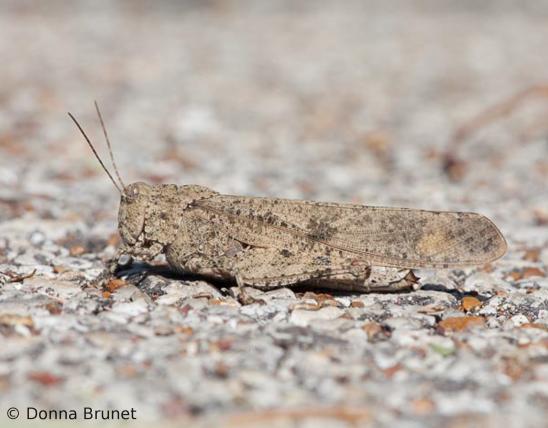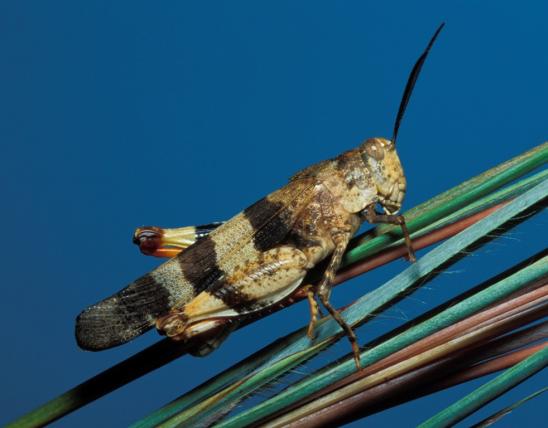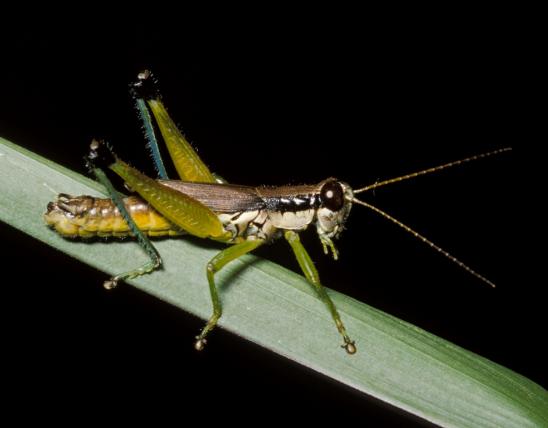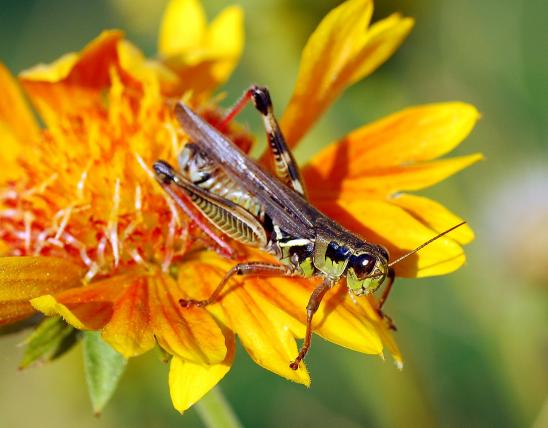
The lichen grasshopper sticks to sunny, rocky areas, such as the many rocky glades and hilltops in the Ozarks, where lichens are plentiful. It is perfectly camouflaged there: its mottled and speckled pattern closely resembles the random patterns made by lichens growing on rocks. The overall color may vary in this species depending on the main color of the rocks. Individuals may be greenish, tan, brown, gray, yellowish, or slightly rusty.
More key identifiers include:
- The tibias (shin-like segments) of the hind legs are usually yellow, but sometimes darker brown
- Wing pattern when outstretched: pale yellow on the basal half, with a dark band that expands in width toward the front and hind edges of the wing, and clear on the outer part of the wing.
Learn more about this and other short-horned grasshoppers on their group page.
Habitat and Conservation
The lichen grasshopper is strongly limited to its rocky, open habitat, and each Missouri population tends to occur only within a particular glade. Missouri glades may be limestone, dolomite, chert, sandstone, or granite, and they usually occur on hilltops or other high areas. Missouri glades are separated by forests or woodlands, which these grasshoppers are loathe to enter into. When disturbed, a lichen grasshopper will hop or fly away, but it almost never will enter the woods. It will circle back to stay in the open area of the glade.
Therefore, the surrounding woodlands prevent the grasshoppers from moving from glade to glade and interbreeding. It also prevents a population in one glade from being able to repopulate a glade whose population has been killed off for some reason. A recent study showed that Missouri populations of lichen grasshoppers usually are made of fewer than 280 individuals.
Glade conservation is critical to the survival of this nifty insect. Over the years, many of Missouri's glades have been colonized by eastern red cedar and then reverted to forest. Glades are kept open by naturally occurring fires. Long-term fire suppression has led to the loss of glades. As conservationists have learned about the role of periodic disturbance in the glade ecosystem, they have begun restoring glades with cedar removal and prescribed fire.
The lichen grasshopper's overall range extends from eastern Colorado and Wyoming and northeastern New Mexico east to the western Carolinas and Georgia. The centers of population are in the Ozarks, Ouachitas, and southern Appalachians, as well as eastern portions of the Rockies and rocky places in the Great Plains.
Life Cycle
Lichen grasshopper adults appear in late spring or early summer and may be present until hard freezes end their lives in fall. Their eggs will overwinter.




































